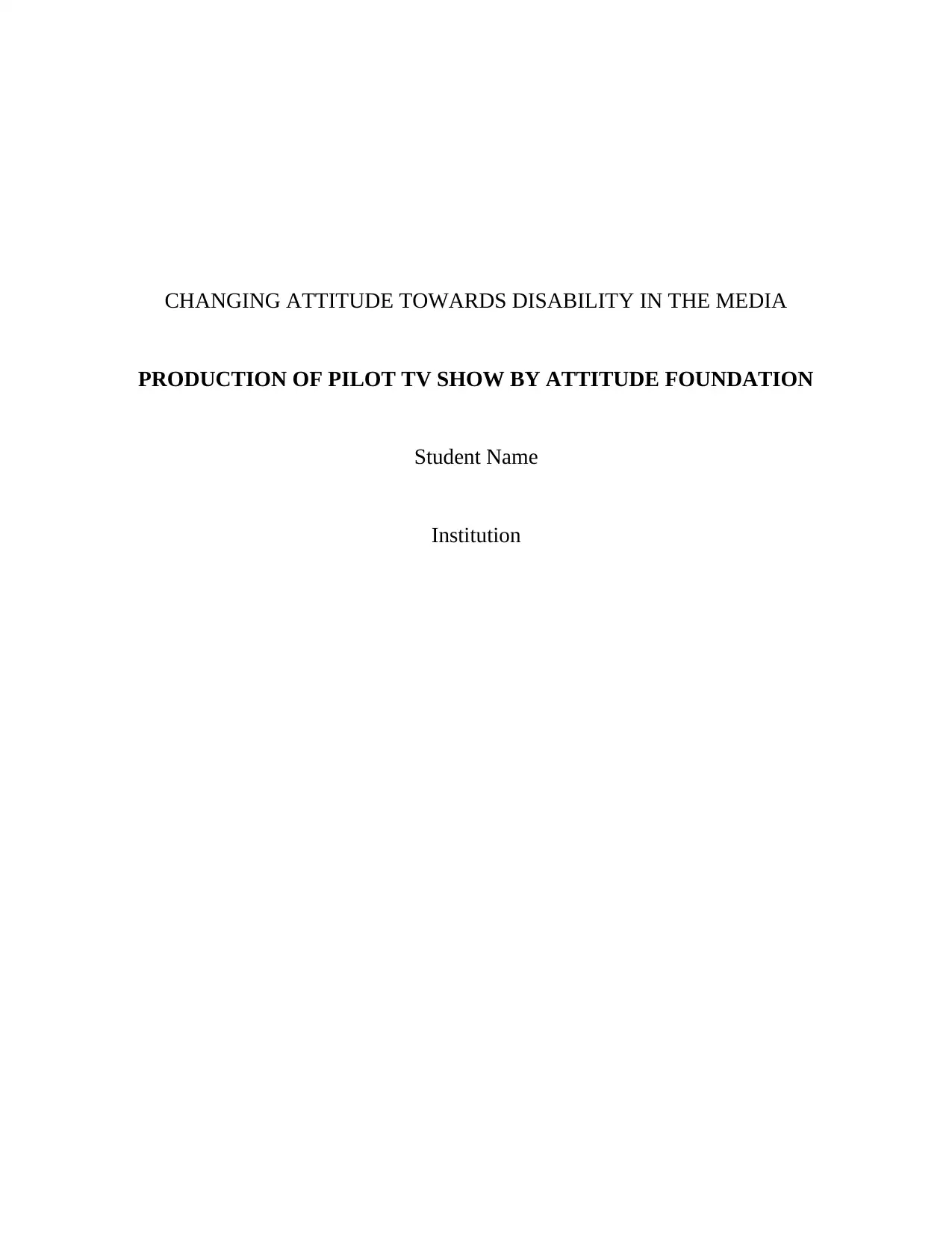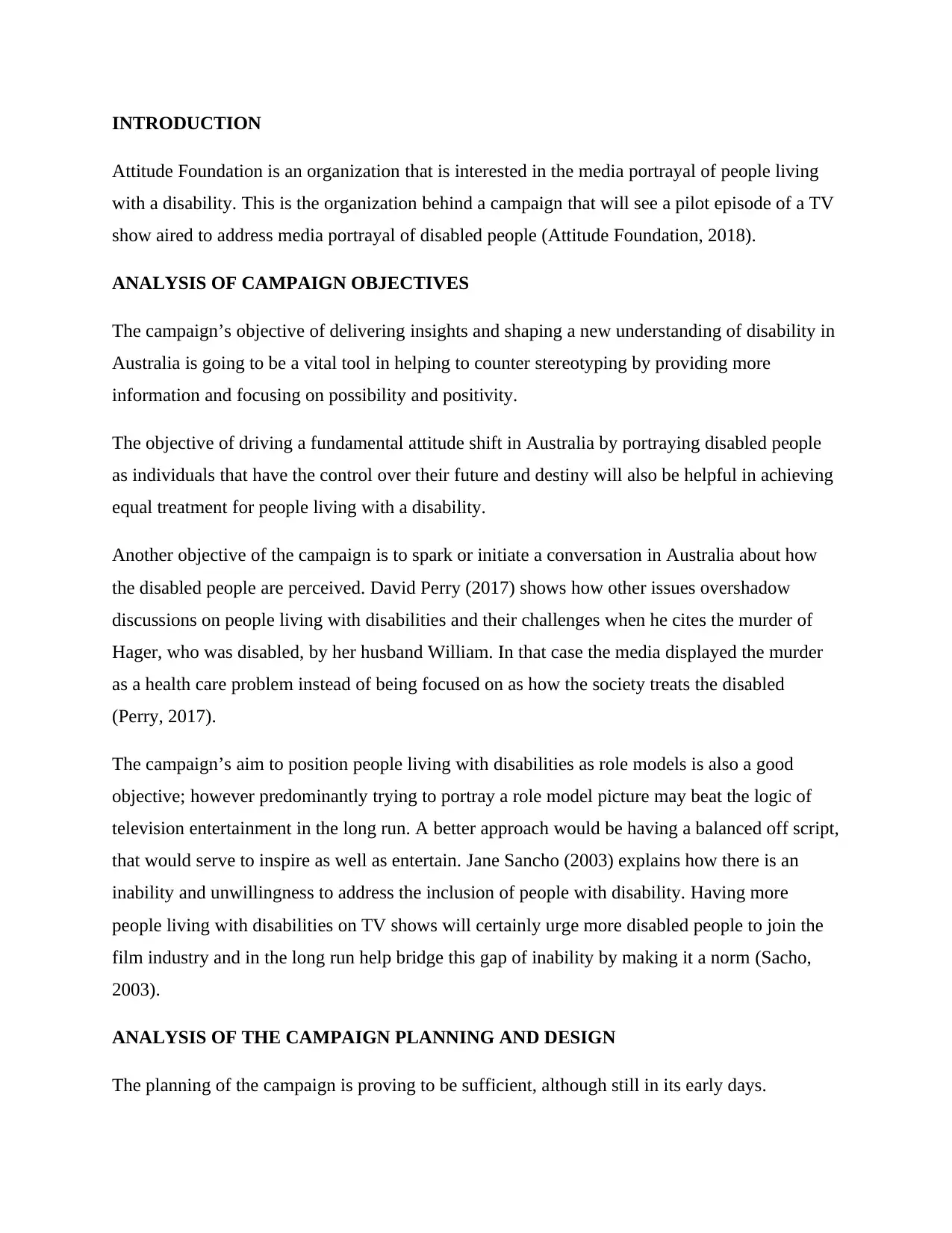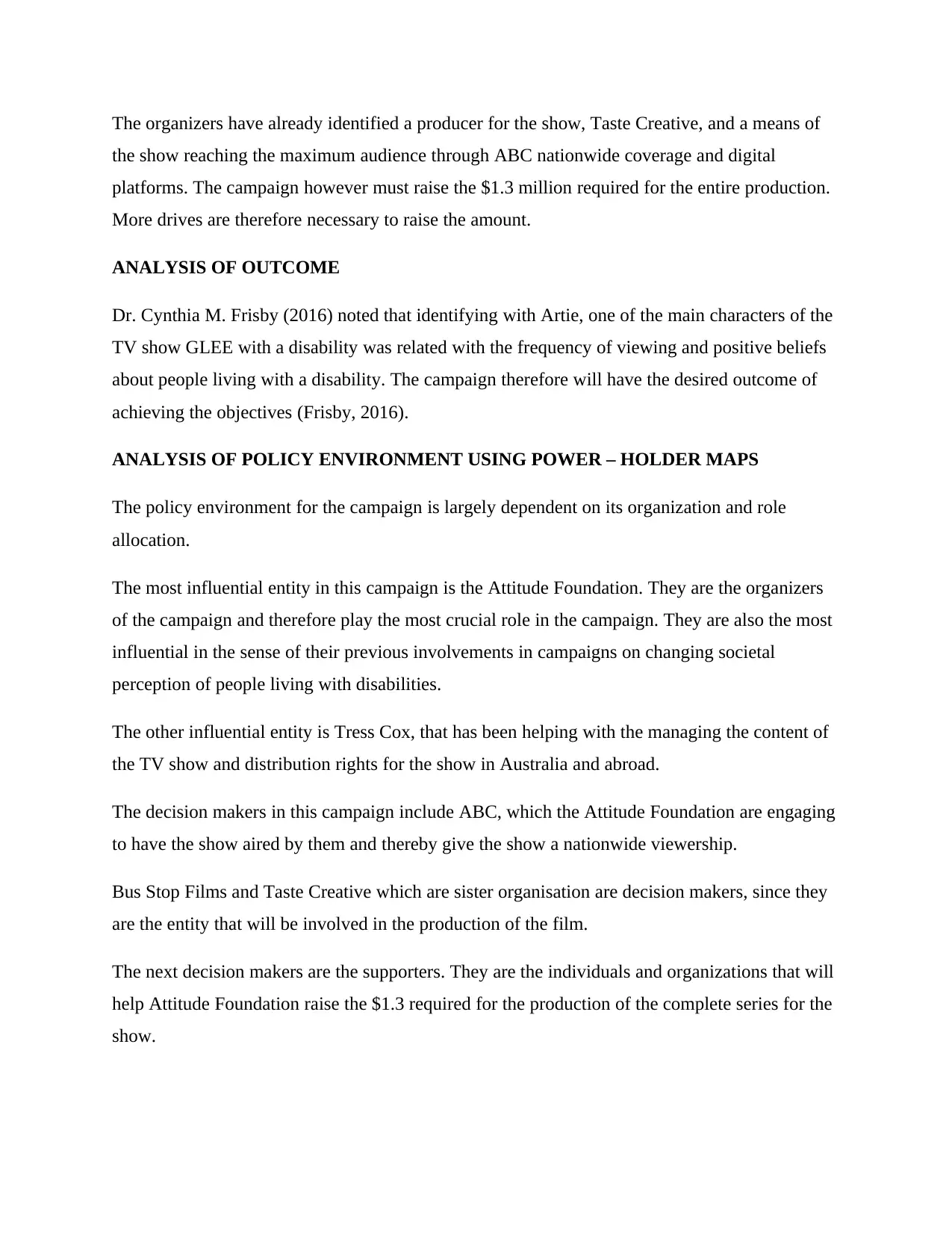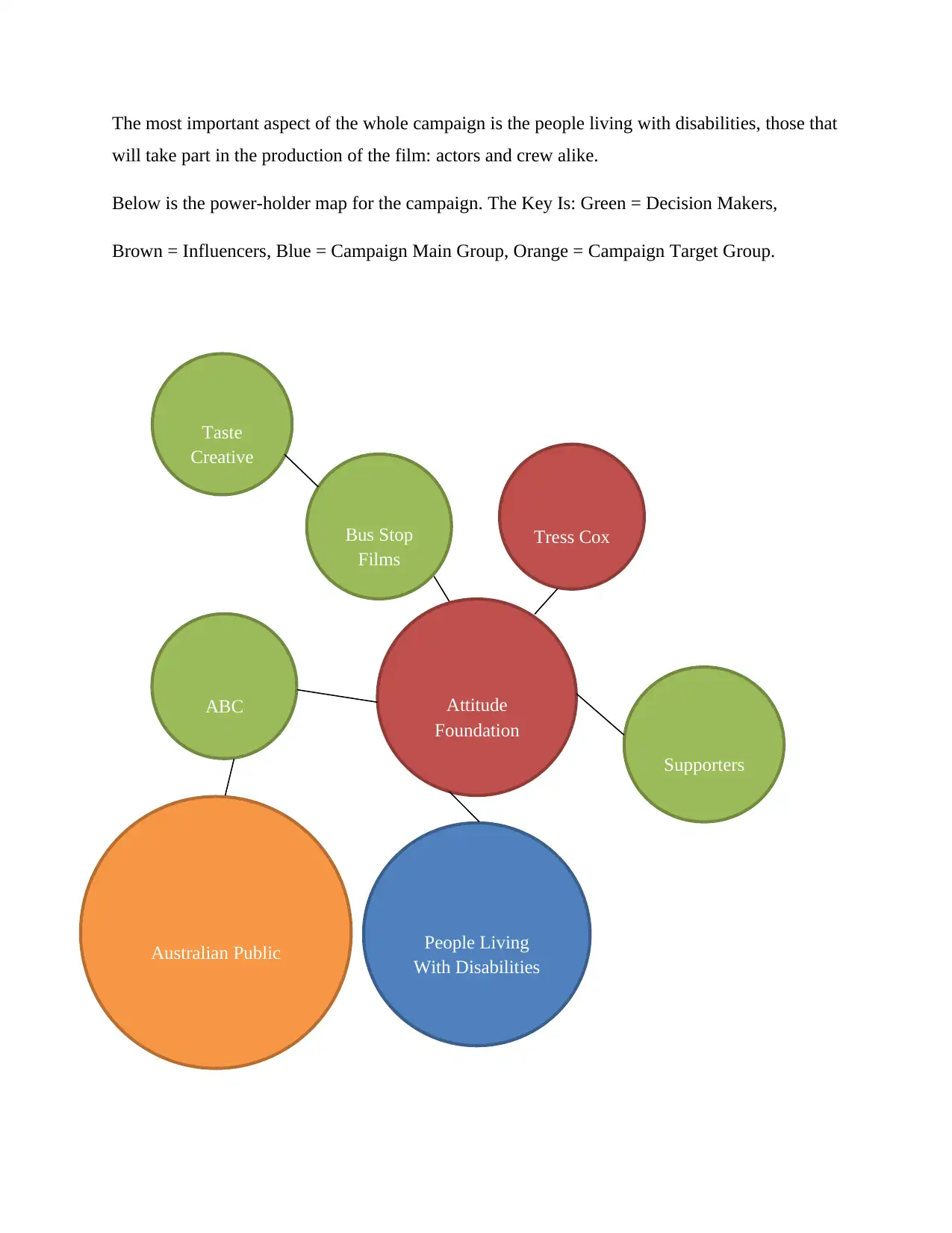Attitude Foundation Campaign: Disability in Media Analysis Report
VerifiedAdded on 2021/05/31
|5
|1078
|99
Report
AI Summary
This report provides an in-depth analysis of the Attitude Foundation's campaign, aimed at changing societal attitudes towards disability through media representation, specifically focusing on a pilot TV show. The report examines the campaign's objectives, which include shifting perceptions, fostering equal treatment, and initiating conversations about disability. It also assesses the campaign's planning and design, highlighting the involvement of key players like Taste Creative and ABC, and the importance of fundraising. The report further analyzes the expected outcomes, drawing on research that links positive portrayals of disability in media with changes in attitudes. Finally, the report utilizes a power-holder map to identify and categorize the influential entities involved in the campaign, including the Attitude Foundation, Tress Cox, ABC, and the target group of people living with disabilities. The conclusion emphasizes the significance of the campaign in promoting inclusivity and challenging stereotypes.
1 out of 5







![[object Object]](/_next/static/media/star-bottom.7253800d.svg)